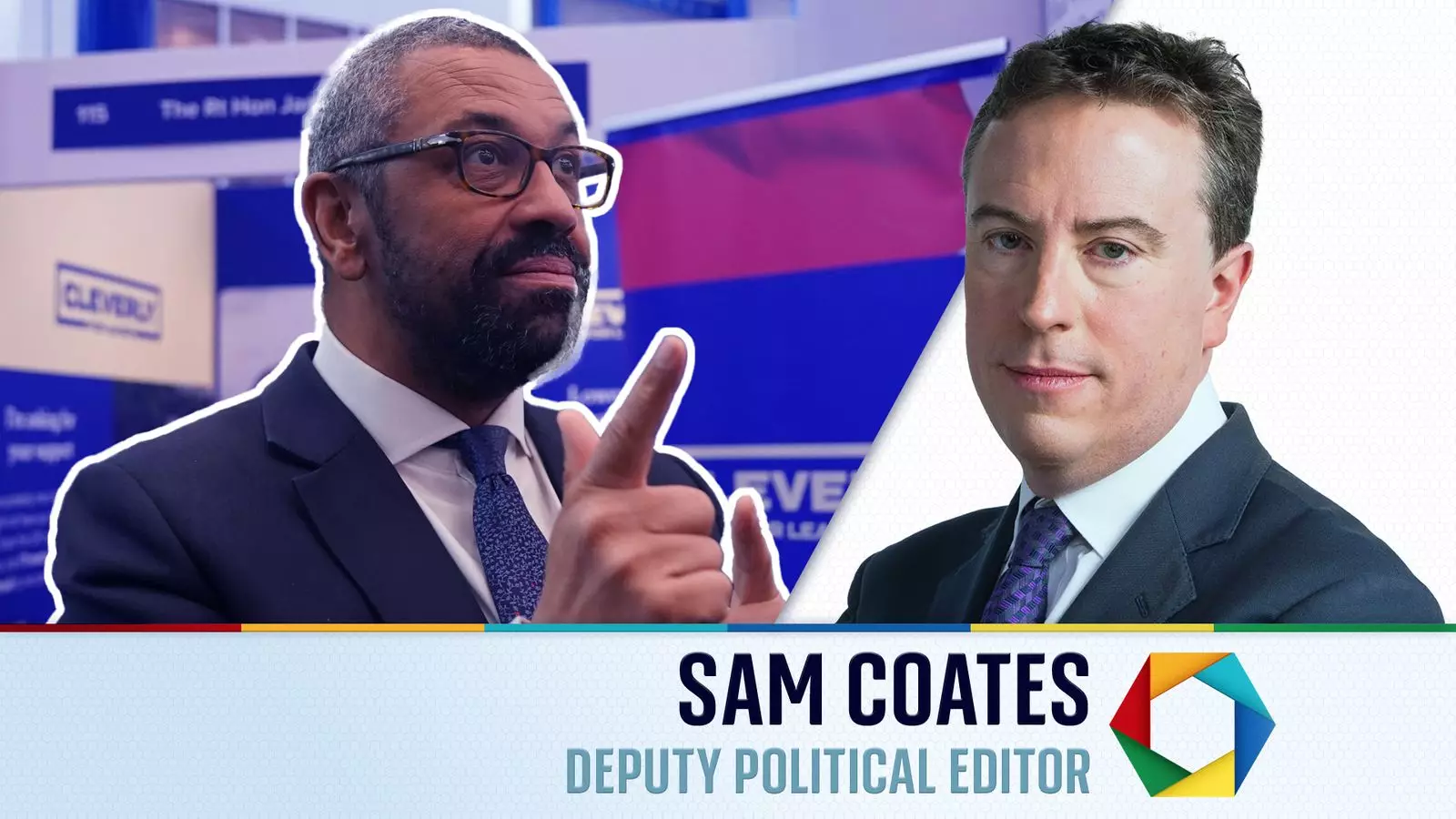In the fast-paced arena of political leadership contests, candidates often find themselves navigating a complex landscape of public perception and internal party dynamics. The ongoing Tory leadership contest reveals the intricate interplay among candidates, with varying ideologies vying for support from their party’s membership. This analysis focuses on the recent developments within the contest, particularly examining the rise of James Cleverly, the strategies of Kemi Badenoch, and the faltering momentum of Robert Jenrick.
James Cleverly’s recent surge in the Tory leadership race is noteworthy. His conference address resonated well with party members, effectively enhancing his stature among contenders. Cleverly’s speech was strategically designed to uplift and unite the Conservative Party, elevating him to the forefront of the competition. In a context where emotional appeal matters greatly, Cleverly’s ability to connect with the audience marked a turning point. However, while he stands at the pinnacle today, this momentum might not ensure sustained support among the broader Conservative base, especially given the unpredictability of voter preferences.
Cleverly’s situation exemplifies the often ephemeral nature of political momentum. His rise—though impressive—does not eliminate the strategic complexities he will face in the subsequent rounds of voting. The upcoming knockout rounds promise to be pivotal, as 170,000 Tory members prepare to cast their ballots, demonstrating the unpredictable nature of party politics where a single misstep could reverse fortunes.
In contrast to Cleverly, Kemi Badenoch is embarking on a bold strategy to solidify her appeal among the more right-leaning factions of the party. By explicitly courting the Tory right, Badenoch seems less concerned with reaching out to the moderate One-Nation Conservatives, a decision that could signify a purist approach in an era where party unity is crucial. Her insistence that the Conservative Party must rally around her candidacy indicates a determination to consolidate support amid an otherwise fragmented party.
Badenoch’s campaign could be interpreted as a calculated risk, especially given historical tensions between her and some members of the European Research Group (ERG). By placing her stake firmly within the conservative base, she risks alienating moderates while attempting to draw in dissatisfied factions from other candidates, such as Robert Jenrick’s supporters. Her strategy reflects a broader trend in modern politics, where ideologically distinct candidates seek to claim territory within a party grappling with divergent viewpoints.
Conversely, Robert Jenrick’s declining momentum raises questions about the effectiveness of his strategy and public reception of his agenda. Once considered a frontrunner, recent polls indicate a drop in support, highlighting a stark reality; the conference speeches may not have resonated as he hoped. Initial predictions suggested he would command a significant number of votes, yet falling short of expectations can have damaging implications for his campaign.
Peering deeper into this decline, one must consider how conference performances can shape candidate perceptions. If Jenrick’s message wasn’t well-received, it could signal a broader disillusionment among party members. His struggle against Cleverly’s rising star illustrates the fluid dynamics of leadership contests and reminds us that public opinion can shift dramatically based on the candidates’ perceived strength and clarity of vision.
As the leaders continue to vie for supremacy, there are critical lessons to draw from the current state of the Tory leadership contest. The emphasis on ‘integrity and honesty’ paired with ‘conservative values’ among party members indicates a yearning for a leader who can authentically embody the principles of the Conservative Party while also unifying disparate factions.
Ultimately, the contest is not merely about who will lead the party but also about shaping the future direction of the Conservative Party amid fluctuating public sentiment. The next rounds will uncover the candidates’ ability to shift perceptions and galvanize support. As unexpected alliances form and strategies evolve, the political stakes remain fiercely competitive, underscoring that in politics, momentum is both a weapon and a balancing act. The outcome remains uncertain, leaving room for both excitement and unpredictability in the coming days.

Leave a Reply